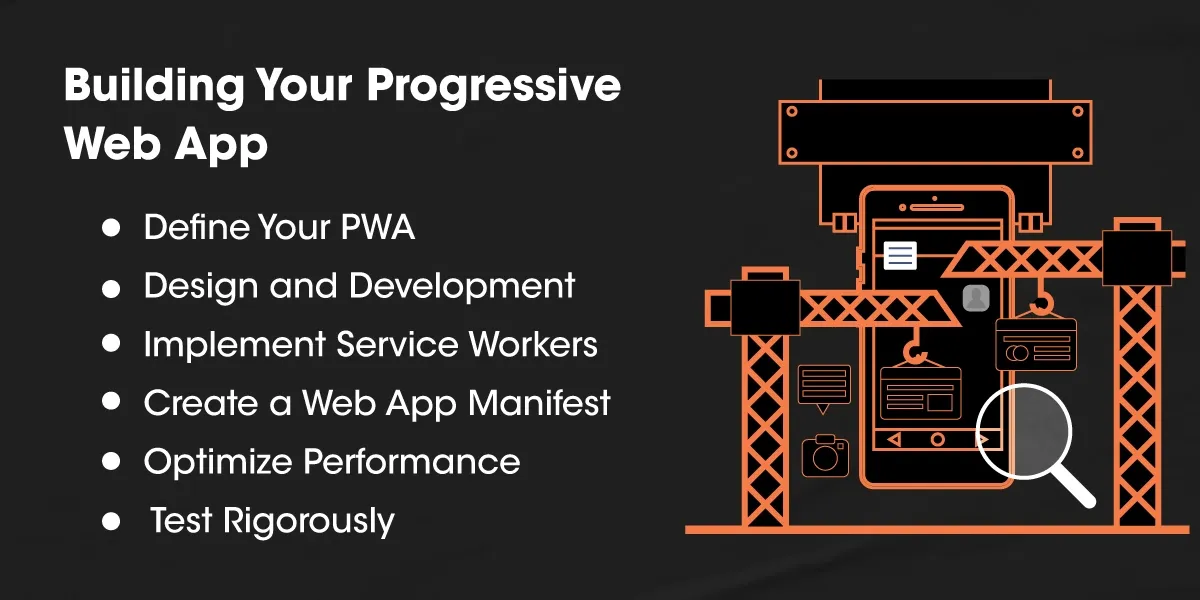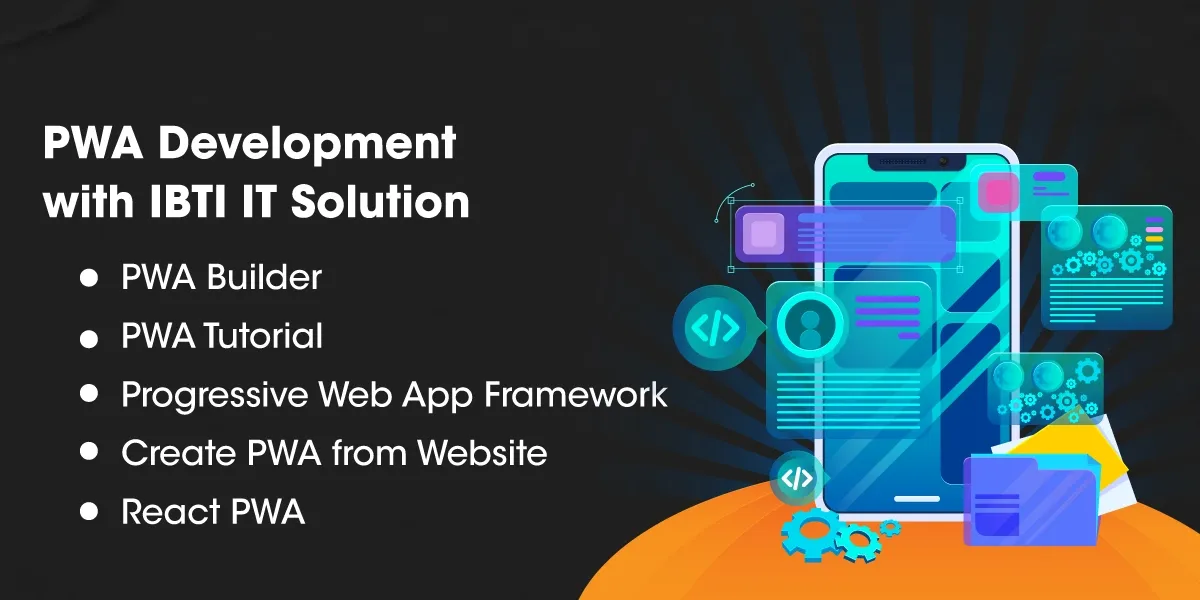How to Build a Progressive Web App?
 Marketing IBTI#Marketing IBTI
Marketing IBTI#Marketing IBTI
In today's fast-paced digital world, users demand seamless, fast, and reliable experiences. Progressive Web Apps (PWAs) have emerged as a game-changer, offering app-like functionalities while being accessible through the web. By combining the best of both worlds, PWAs deliver exceptional user experiences, improved SEO, and cost-effective development.
Understanding Progressive Web Apps
A Progressive Web App (PWA) is a web application that functions like a native mobile app. Built using standard web technologies such as HTML, CSS, and JavaScript, PWAs offer a robust and engaging user experience.
Critical advantages of PWAs include:
- Enhanced User Experience: Faster load times, offline capabilities, and push notifications improve user satisfaction.
- Improved Search Engine Optimization (SEO): PWAs often rank higher in search results due to their speed and mobile-friendliness.
- Cost-Efficiency: Developing a PWA is generally more budget-friendly than creating native apps for multiple platforms.
- Broader Reach: Accessible on any device with a web browser, PWAs have a wider potential audience.
The core components that make up a PWA are:
- Service Worker: This script handles offline functionality, push notifications, and background processes.
- Web App Manifest: A JSON file providing metadata about the app, including icons, names, and startup settings.
- Responsive Design: Ensuring the app looks and functions well across different screen sizes.
Successful examples of PWA include Twitter Lite, a streamlined version of Twitter, and Alibaba, an e-commerce giant that transformed its mobile website into a high-performing PWA.
Building Your Progressive Web App

Define Your PWA
Begin by outlining the purpose of your PWA. Consider what specific problem it will address or what value it will offer users. Define your target audience and understand their needs through research such as surveys and competitive analysis. Determine the core features of your app and prioritize them, starting with a Minimum Viable Product (MVP) to quickly launch and gather user feedback. Establish what will make your PWA unique compared to existing solutions and articulate this clearly as your unique selling proposition (USP).
Design and Development
The design phase focuses on creating a user-friendly and visually appealing interface. Ensure the design is consistent, intuitive, and aligned with modern design principles. Use tools like Figma or Adobe XD to create prototypes and wireframes. Your design should be responsive, adapting to different screen sizes and devices. Implement flexible layouts and use media queries to adjust styles for various device types. Also, ensure the app is accessible to all users by following accessibility standards and testing with tools such as Axe or Lighthouse.
During development, implement the user interface and ensure it’s visually appealing and functional. Optimize images and code using lazy loading and code splitting techniques to improve performance. Test the app across different devices and browsers to ensure compatibility and a consistent user experience.
Implement Service Workers
Service workers play a crucial role in enabling offline functionality and enhancing performance. They handle caching, so your PWA can work without an internet connection. Create a caching strategy to store essential resources and provide fallback content when the network is unavailable. Integrate push notifications to re-engage users and implement background sync to handle tasks like sending data or updating content, even offline. Manage user permissions for notifications, ensure robust sync logic, and gracefully handle errors.
Create a Web App Manifest
The web app manifest is a JSON file that provides metadata about your app, such as its name, description, and icons. This file allows users to install your PWA on their home screens, making it easily accessible. Design your manifest file to include all necessary details and ensure the installation prompt is configured to appear at the right time, encouraging users to install the app without being intrusive.
Optimize Performance
Performance optimization is vital to a smooth user experience. Start by compressing images and minifying CSS and JavaScript to reduce file sizes and speed up load times. Implement lazy loading for images and other resources to improve initial load times. Use code-splitting to load only the necessary code for each page. Regularly test your app’s performance using tools like Google Lighthouse and adjust based on the feedback to ensure optimal performance.
Test Rigorously
Testing is essential to ensure your PWA works well across various devices, operating systems, and browsers. Perform extensive cross-platform testing to identify and fix compatibility issues. Gather feedback from real users to understand their experiences and identify areas for improvement. Use bug tracking systems to manage and address any problems, and keep your app updated based on user feedback and performance metrics.
Additional Considerations
Beyond the primary development steps, consider integrating SEO best practices to ensure your PWA is discoverable in search engines. Implement HTTPS for secure communication and regularly scan for security vulnerabilities to protect user data. Lastly, integrate analytics tools to monitor user interactions and engagement, using this data to make informed decisions about future updates and improvements.
PWA Development with IBTI IT Solution

At IBTI IT Solution, we specialize in creating exceptional PWAs that deliver outstanding user experiences. Our team of experts can help you with:
- PWA Builder: We provide custom PWA development solutions tailored to your needs.
- PWA Tutorial: Our comprehensive training programs equip you with the skills to build PWAs independently.
- Progressive Web App Framework: We leverage the latest frameworks to accelerate development and ensure top-notch performance.
- Create PWA from Website: We can transform your existing website into a powerful PWA.
- React PWA: Our expertise in React enables us to build dynamic and scalable PWAs.
Conclusion
Progressive Web Apps offer numerous benefits for businesses and users alike. Investing in PWA development can enhance user experience, improve SEO, and expand your reach. IBTI IT Solution is your trusted partner in creating exceptional PWAs that drive business growth.

Marketing IBTI
#Marketing IBTI🇧🇷 Português
A IBTI é uma empresa de tecnologia com mais de 12 anos de experiência em desenvolvimento de sistemas, apps e soluções sob demanda. Atuamos no Brasil e no exterior com foco em qualidade, inovação e eficiência.
🇺🇸 English
IBTI is a tech company with over 12 years of experience developing custom software, apps, and IT-as-a-service solutions. We serve clients in Brazil and abroad, with a strong focus on quality, innovation, and efficiency.